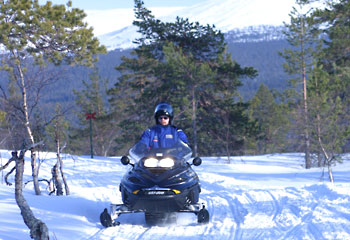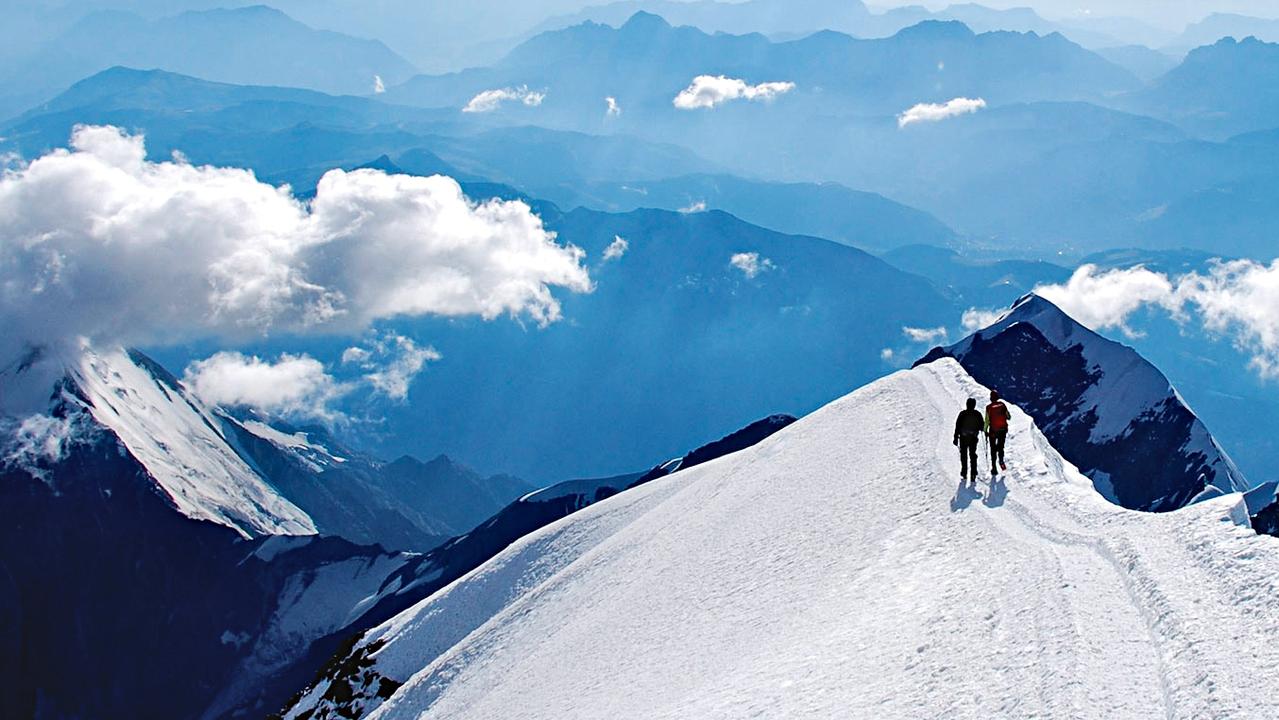Ice safaris with flying Finns
'TAXIS are for wimps' was clearly the message, as Jenny Stevens climbed aboard a sleek snowmobile at the start of her Lapland adventure.

AS airport pick-ups go, it was fast and furious. Taxis are for wimps was the unmistakable message, as we eyed the sleek Polaris snowmobiles.
This, after all, was Finland, a country where 'flying Finns' have nothing to do with water and a lot to do with speed and aerodynamics.
Speed is second nature to Finns. Over the years, young men with ice in their veins, a shock of blond hair and surnames such as Makinen, Hakkinen, Kankkunen and Raikkonen have blitzed the motor racing and rallying circuits.
These flying Finns are the gods of their sports, as recognisable to their fans as any pampered footballer, but mere mortals when it comes to the one aspect over which man has no control: the weather.
For cold is king in Finland. It brings midwinter temperatures that can plummet to -40; causes ice to freeze to a depth of more than a metre on lakes; and allows snow to blanket the ground for 200 days a year. It can be temperamental, too, and cause an early spring thaw.
We'd hoped the ice lake and snow-covered gravel tracks around Kuusamo, in north-east Finland, would hold up long enough to drive with four-times world rally champion Juha Kankkunen at his new driving academy, but it wasn't to be.
Instead, we met up with him in a Helsinki bar, amused at how he was instantly recognised by everyone in that cool place, many of whom would have been on trainer wheels when Kankkunen won his last world championship in 1993.
So while the other passengers waited for comfortable heated rides to their Kuusamo hotel, we followed our adventure guide, with the rugged outdoorsman looks, across the airport car park to be kitted out for snowmobiling instead.
Snow suit, boots, woollen socks, balaclava, helmet, leather gloves ... everything a girl needs for the ride to her hotel through the lovely Finnish countryside.
Only an hour or so by air north-east of Helsinki – but, more tellingly, 80km south of the Arctic Circle and 35km from the Russian border – this part of Finnish Lapland is playground central.
It welcomes as many as a million visitors a year, including planeloads of skiers and adventurers from England, the Netherlands and Germany.
Those who like their adrenalin rush fast and furious come for the howl of a rally car skidding over snow or ice; the growl of a snowmobile climbing mountain trails; the grace of a ski jumper soaring down the biggest all-year ski jump in the world; or the thumping rush of a skier bobbing and bouncing down a World Cup mogul course at nearby Ruka ski resort.
The woods, lakes and rivers teem with wildlife, from bears to trout, drawing more peaceful souls in the summer months: bird-watchers, fishermen, photographers and hikers.
We were there in spring, for a taste of both. When the sun shone, it was a vast wilderness of birch and spruce where blue sky meets green trees blanketed by white snowballs that looked like a giant had been play-fighting with meringue.
You could get dangerously lost in this country, as the sameness of forest is broken only by snowmobile tracks and the footprints of animals of the night.
We skirted creeks that cut a path through steep, snowy banks, and powered across ice lakes ringed by boarded-up summer cottages.
Often the ice cover oozed water despite being a metre thick; with the snow melting and making the surface mushy, our relief was palpable after every stomach-churning crossing.
When we did stop on the ice, we never ventured far from our snowmobile's tracks – call me paranoid, but when you're from Australia it's difficult to accept ice underfoot.
Of course the ice fishermen, relaxing on deckchairs while pulling wriggling perch from ice holes, made our fears seem ridiculous.
But in our eyes, their tiny fishing rods, just 25cm long, looked like children's toys, incapable of handling any weight.
Our guide borrowed a rod and easily proved us wrong, pulling a 2kg rainbow trout from under the ice within a minute with a single maggot as bait.
The elderly fisherman was delighted, and spent the next five minutes talking in rapid Finnish to the guide, checking whether they had common acquaintances in Kuusamo.
With little more than 17,000 people, it's a small town still, but one that has seen the best of times and the worst of times.
The elderly live with bitter memories of World War II, which left Kuusamo with only three buildings standing, while their parents witnessed independence from Russia after the Bolshevik revolution of 1917. The spectre of the Russian bear prowls the common border still.
Finns and Russians cross back and forth with the right papers, but a new border crossing, soon to open east of Kuusamo, will increase access for foreign tourists as well.
The next step will be cultural tours to Karelian villages, visits to the Solovetski Monastery, a great citadel of Christianity, plus snowmobile safaris, fishing and hunting.
Safaris are big business in Finland, and adventure companies such as Rukapalvelu keep 'million-star hotels' – permanent forest camps – around Kuusamo. These retain traditional Lappish elements such as reindeer blankets and spicy reindeer sausage cooked over an open fire.
Rukapalvelu also runs safaris to husky camps and Lappish reindeer farms where you trade petrol power for a thrill-a-minute ride in a sleigh.
But for real bang for your buck, there's little to beat travelling sideways on an ice lake.
You can learn the skills of driving and sliding on ploughed ice tracks in safe, modern cars, or sit in the passenger seat as a flying Finn such as Juha Kankkunen demonstrates old-school rally arts at 200km/h.
The writer was a guest of Scandinavian Airlines, MyPlanet and the Finnish Tourist Board
The Sunday Telegraph



